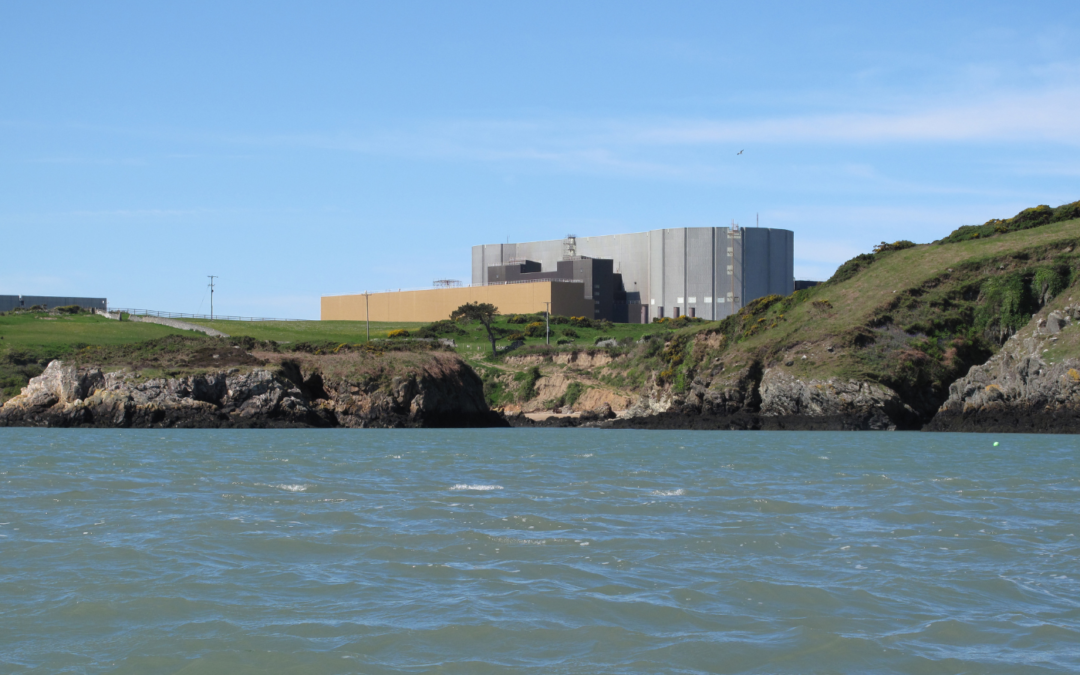To enable the ongoing decommissioning of a nuclear power station, decades of careful activity is needed to manage the safe withdrawal of a plant from service. We were honoured when UK Power Networks Services (UKPNS) chose us to help with this exacting work at Wylfa, a NRS site located on the tip of Anglesey.
A challenging assignment
Our initial task was to provide the design for an 11kV substation that would supply power to the site for the decommissioning period. The remit was then extended to encompass design of the required cable routes negotiating a site already congested with existing services, as well as other tasks such as preliminary drainage design at the substation location.
Given the nature of the site, the safety standards involved were exacting – requiring experienced civil design support, and with all details assessed meticulously. As an example, ground investigation on the project is being provided through our supply chain by our trusted geotechnical partner. In this case, extensive collaboration with the client was needed, with every borehole or trial pit requiring detailed discussions with stakeholders over the individual methodology and justification for each location.
The coastal site introduced additional challenges, with extreme weather conditions to be considered in material choice and design.
A durable design
Demolition and final clearance here is not scheduled until 2096 to 2101. Consequently, site operator NRS requested a substation solution with an unusually long lifespan. Competing requirements, however, meant that the structure was to be designed using a steel frame and a lightweight composite roof, an approach not normally compatible with this duration requirement.
The approach taken to extend the lifespan of the structure centred on careful investigation and research, component by component, to maximise robustness.
Additionally, materials such as galvanised steel were of the highest specification. Design details such as choice of brick and types of mortar joints were assessed carefully, with the most robust possible approach always selected.
Certain elements of the building fabric we were required to include in the design were found not to attain the long lifespans requested – the lightweight, composite roof being the key example. The solution we identified was to ensure that all such elements were easily accessible and could be maintained, repaired and replaced throughout the lifecycle of the building with minimised disruption to site activity.
“Delivering longevity was key to this project’s success and satisfying the requirements of all parties,” comments Matthew Smith, Associate at WCS. “The harsh weather conditions on the Welsh coast also had design implications that had to be taken into account. Overall, delivering a practical and workable design meant enhancing robustness was a matter of meticulous attention to details rather than identification of one, big-picture solution. We and our client were delighted when the site operator quickly approved our design proposal.”
Complex cabling across the nuclear site
The four cable routes needed on site proved a significant challenge. Numerous buried services needed to be identified from records or survey, with other complications also present.
Adds Matthew: “At one time, a very large Goliath crane had been a fixture on site, and extensive concrete foundations had been laid just for that, creating an extended obstacle for our work. There are also numerous existing cables, drainage and other services across the site, so careful and lengthy liaison with our client and NRS was needed to obtain all available survey and records information in an effort to establish as far as we can which existing assets we can avoid, which to negotiate and which we could re-use.”
The main reactor building is already receiving many cables with more required, including for the new switchgear, and the transformer, destined for that building. Cables enter the reactor building through a cable race – a full basement corridor encircling the reactor building, dedicated to cabling.
“This was congested with numerous cable trays, floor to ceiling,” continues Matthew. “We had to establish with the site operator exactly which ones we could use, and then plan a complex route that involved crossover as well as coming down to usable trays and ultimately back up into the destination room.”
Three site visits were needed, two of which involved surveys of the cable race. Efforts were complicated by a theoretical risk of asbestos, requiring the mandated safety precautions, including exacting mask fitting.
“The cable route design at Wylfa is at the complex end of the projects I have worked on,” says Matthew. “It was certainly useful that the WCS team have dealt with so many substation projects before, so none of the challenges were unfamiliar – there were just a lot more of them at once than is typical.”
Our involvement continues at Wylfa, with new areas of work requiring some design modification.
Working on a complex power and energy project? WCS has a team with the experience to resolve your civil engineering design challenges. To speak to one of our engineers, please get in touch on 020 8938 3705 or via info@wcs-consult.co.uk.

